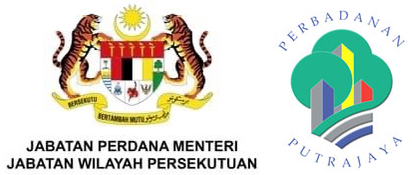Putrajaya Low Carbon Green City
Putrajaya Low Carbon Green City
The launch of the National Green Technology Policy on 24 July 2009 by Government of Malaysia has opened a new chapter in Malaysia’s effort in addressing environmental issues involving climate change and energy use through the application and development of green technology to reduce Malaysia’s carbon footprint in addition to enhancing environmental sustainability. The policy has also outlined five main objectives, where the fourth objective is “to ensure sustainable development and conserve the environment for future generations”.
National Green Technology Policy includes elements of the economic, environmental and social, as outlined by the following five (5) objectives:
•to coordinate the growth of green technology and to enhance the contribution of green technology to the national economy;
•to facilitate the growth of green technology industry and to increase the contribution to the national economy;
•to increase the capacity for innovation in green technology development and enhancing competitiveness in green technology at an international level;
•to ensure sustainable development and conserve the environment for future generations; and
•to increase public awareness and education on green technology to promote widespread use of green technology.
As an extension to that , the Prime Minister of Malaysia in his speech during the presentation of 2010 Malaysia Budget on 23 October 2009, had announced “to develop Putrajaya and Cyberjaya as Green Technology Cities as pioneers to other urban development” as one of the measures to promote green technology development activities in Malaysia.
On 20 November 2009, the Cabinet has approved the National Climate Change Policy which outlines ten strategic thrusts and 43 key actions to address climate change phenomenon towards sustainable development goals of the country.
“The National Climate Change Policy to serve as a framework for deploying and providing guidance to government agencies, industry, and community stakeholders to meet the challenges of climate change in a holistic manner. The policy will help in identifying the integrated actions to be taken to achieve the goal of sustainable development”.
Welcome remarks of YAB Dato’ Sri Najib Bin Tun Abd Razak, Prime Minister of Malaysia in National Climate Change Policy, Ministry of Natural Resources and Environment Malaysia, 20 November 2009.
In addition, during the COP15 conference in Copenhagen on 17 December 2009, Malaysia has made a commitment to reduce carbon emissions by up to 40% of the intensity of gross domestic product (GDP) by 2020 compared to 2005.
“I would also like to announce here in Copenhagen that Malaysia is adopting an indicator of a voluntary reduction of up to 40% in terms of emissions intensity of GDP by the year 2020 compared to 2005 levels. This indicator is conditional on receiving the transfer of technology and finance of adequate and effective levels from our Annex 1 partners, that correspond to what is required in order to achieve this indicator.”
Speech of YAB Dato’ Sri Mohd Najib Bin Tun Abd Razak, Prime Minister of Malaysia at the U.N. CLIMATE CHANGE CONFERENCE 2009 – “15TH CONFERENCE OF PARTIES (COP 15)” 17 December 2009.
To achieve the Government’s aspiration, Putrajaya Corporation (PJC) has decided to formulate a Green City action plan for Putrajaya. As the first step, PJC has organized a two days Putrajaya Green City International Conference from 23rd to 24th of February 2010. The conference serves as a platform for Putrajaya Corporation to learn, understand and gain experience from other countries in implementing green city programs. It has also helped PJC in identifying the direction, concept and definition of ‘green city’ envisaged in the development of Putrajaya.
On the 26th and 27th of April 2010, Malaysia in collaboration with PJC and Universiti Pertanian Malaysia (UPM) has organized Malaysian Green Forum (MGF), inaugurated by Prime Minister of Malaysia. It was attended by top government officials and other stakeholders aimed to explore issues related to the natural and built environment in Malaysia and Malaysia’s commitment to improving the environment at the national and regional level as well as to formulate resolutions and renew commitment to address related issues in a more comprehensive and holistic way.
“Environmental sustainability can only fully materialize if there is a complete and holistic ecosystem that allows for it. The government is aware of this fact and has taken this approach in gearing the nation towards this aim. I have identified six major components of this ecosystem and together they form the acronym AFFIRM. They are Awareness, Faculty, finance, Infrastructure, Research, Development and Commercialization and Marketing”
Speech of YAB Dato’ Sri Mohd Najib Bin Tun Abdul Razak,
Prime Minister of Malaysia at the Malaysian Green Forum (MGF), Seri Siantan Conference Hall, Putrajaya Corporation.
Definition of Putrajaya Green City
A Green City is defined as a city planned with the principles of sustainable development with programs and initiatives to preserve the environment and natural resources in the view to reducing the negative impact of human activities onto the environment.
Other aspects that are often associated with the concept of green cities is management of renewable and non-renewable resources, management of waste and the reduction of the impact of greenhouse gases (GHG) such as carbon dioxide resulting from various human activities.
Putrajaya Green City Target
With reference to the above definition, it is clear that green city status to be achieved in Putrajaya is not limited to physical greeneries only. It also covers three main aims as follows:
i.to minimize negative environmental impacts and the use of resources
ii.to promote human interaction with nature
iii.to reduce carbon emissions related to human activities
Science to Action (S2A)
In line with Science to Action (S2A) approach adopted by the Putrajaya Corporation, POLICY 5 in the 2025 Putrajaya Structure Plan provides the direction for this transformation. Among them are:
i.Enhancing ecology, water body and bio-diversity
ii.Application of green technology, infrastructure and practices in city planning and management
iii.Adopting sustainable building practices
iv.Establishing a model green community committed to reduction of carbon footprint



